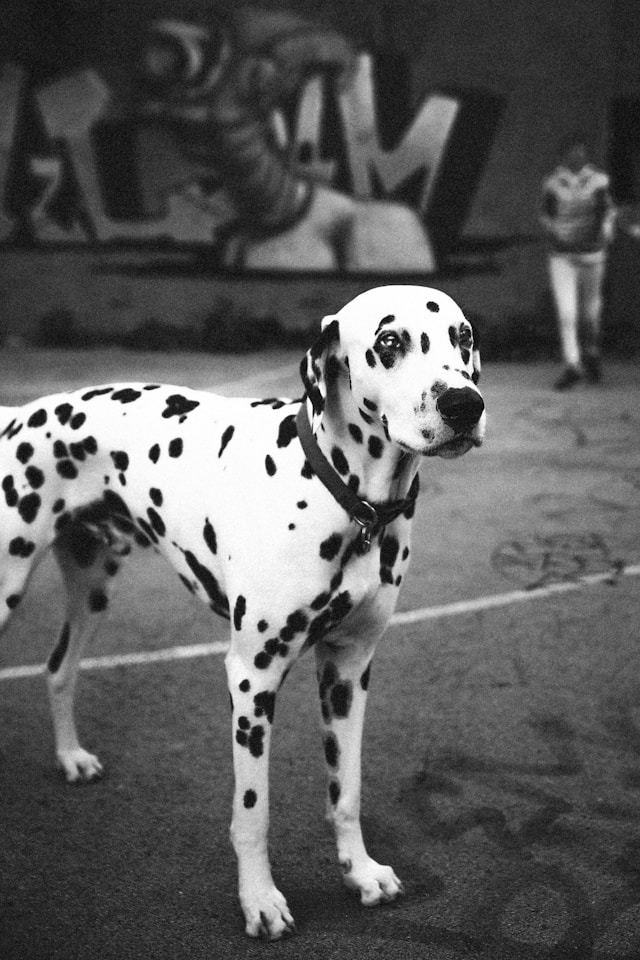How to Customize a Training Program for a Deaf Dalmatian?

Deafness in dogs might seem like a daunting challenge for many dog owners. However, it doesn’t have to be. A deaf dog is still capable of living a happy, fulfilling life, just like any other dog. The key is to establish a strong and effective means of communication that doesn’t rely on sound but on visual cues. This is especially true for particular breeds such as Dalmatians, which have a relatively high incidence of deafness. This article will help you understand the best practices in tailoring a training program designed specifically for a deaf Dalmatian.
Understanding Deafness in Dogs
Before you can begin to train your deaf Dalmatian, it’s crucial to understand the nature of canine deafness. Deafness can be either congenital (present at birth) or acquired (developed later in life). Some breeds like the Dalmatian, have a high incidence of congenital deafness. It is estimated that about 30% of Dalmatians are deaf in one ear and 5% are deaf in both ears.
Cela peut vous intéresser : What’s the Best Diet for a Parrot with Liver Disease?
Deaf dogs perceive the world differently. They rely more on their other senses, like smell and sight, to navigate their environment. These dogs are as intelligent and capable as their hearing counterparts. They just need a different training approach that takes into account their unique needs.
The Importance of Hand Signals
In the absence of sound, visual cues become paramount. Hand signals are a common method used when teaching deaf dogs. In normal dog training, verbal commands are usually paired with hand signals. However, for a deaf dog, the focus will be purely on the hand signals.
Avez-vous vu cela : What’s the Most Effective Way to Treat Submissive Urination in Puppies?
The hand signal for each command should be simple, clear, and distinct from the others. For instance, a flat hand can signal "stop," while a pointed finger can signal "sit." It’s important to be consistent with your signals and ensure everyone involved in the dog’s training uses the same signals.
Training Your Deaf Dalmatian Puppy
Training a deaf dog starts with getting their attention. Unlike with hearing dogs, you cannot just call out their name. Visual stimuli, such as a flashlight or a hand wave, can be used to alert a deaf dog. Some people also use a vibration collar, which can send a non-shocking vibration to get the dog’s attention.
After getting their attention, you can start to teach your dog basic commands using hand signals. Treats are excellent rewards for your deaf Dalmatian puppy when they correctly respond to a signal. The key is repetition and consistency, as it’s through these that your dog will associate the signal with the specific behavior.
Dealing with Challenging Behavior
Like any other dog, your deaf Dalmatian may exhibit challenging behavior such as aggression or excessive barking. The inability to hear can make them more prone to being startled, which can in turn lead to such behavior.
One way to manage this is by creating a safe and predictable environment. Try to approach your dog from the front where they can see you and avoid startling them by touching when they’re not aware of your presence.
You can also teach your dog calming signals. These are natural behaviors that dogs use to avoid conflict and communicate peaceful intentions toward others. For example, yawning, looking away, and sitting down can be calming signals.
Continuous Learning and Adaptation
Training a deaf Dalmatian, or any deaf dog for that matter, is not a one-time thing. It requires continuous learning and adaptation. As you and your dog become more comfortable with each other and the hand signals, you might want to introduce more complex commands.
Take note of your dog’s behavior and adapt your training as needed. If your dog is having difficulty understanding a certain signal, try a different one. Be patient and give your dog time to learn and adjust.
Remember, owning a deaf dog doesn’t mean you have a disabled pet. It’s simply that your pet has a different way of communicating. With patience, understanding, and love, your deaf Dalmatian will be just as responsive, well-behaved, and affectionate as any hearing dog.
Utilizing American Sign Language for Deaf Dogs
American Sign Language (ASL) represents another compelling method for communicating with your deaf Dalmatian. While not all ASL signs are easy for a dog to understand, many signs, particularly those related to actions and emotions, can be easily incorporated into your training program.
Just as in using hand signals, consistency is key in using ASL. The sign should be clear and distinct, and everyone involved in the dog’s training should use the same signs. For example, the ASL sign for "eat" involves mimicking the action of eating with your hand, which can be easily understood by your Dalmatian.
ASL also allows for the bonding process between you and your deaf dog to deepen. When you use sign language with them, you are communicating in a manner that they can understand, which builds trust and understanding. It can also make training more fun and engaging for both the dog and the owner.
Keep in mind, using ASL doesn’t mean you need to learn the entire language. Learning key signs that pertain to your dog’s routine and behavior is sufficient. Signs for commands like “sit,” “stay,” “come,” “eat,” “walk,” and “play” are good starting points.
Harnessing Positive Reinforcement in Training
Positive reinforcement is a cornerstone of effective dog training, and it’s instrumental when dealing with a deaf dog. It’s a method that rewards desired behavior, encouraging the dog to repeat it. When your deaf Dalmatian correctly responds to a hand signal or an ASL sign, rewarding them with a treat or a favorite toy reinforces the behavior.
Training sessions should be kept short, and ideally not more than 15 minutes at a time. This is to avoid overwhelming your Dalmatian and to keep the training enjoyable. Always end the session on a positive note, with a reward or an enjoyable activity.
Keep in mind, the training process will likely be filled with trials and errors. It’s important not to show frustration or resort to punishment if your Dalmatian doesn’t get it right.
Conclusion
Training a deaf Dalmatian is indeed a unique experience that requires a different approach. It’s critical to understand that deaf dogs, despite their hearing loss, are as intelligent and capable as their hearing peers. They just require a different mode of communication – one that relies on visual cues such as hand signals and perhaps even ASL sign language.
Training your deaf Dalmatian involves getting their attention using visual stimuli, teaching them basic commands through hand signals, and handling challenging behavior in a patient and understanding manner. It’s a continuous process that requires observance, adaptation, and positive reinforcement.
Owning a deaf Dalmatian doesn’t mean having a disabled pet. On the contrary, it’s a unique journey filled with opportunities for bonding deeply with your pet and understanding them on a different level. With patience, consistency, and love, your deaf Dalmatian will be as responsive, well-behaved, and affectionate as any other dog.
